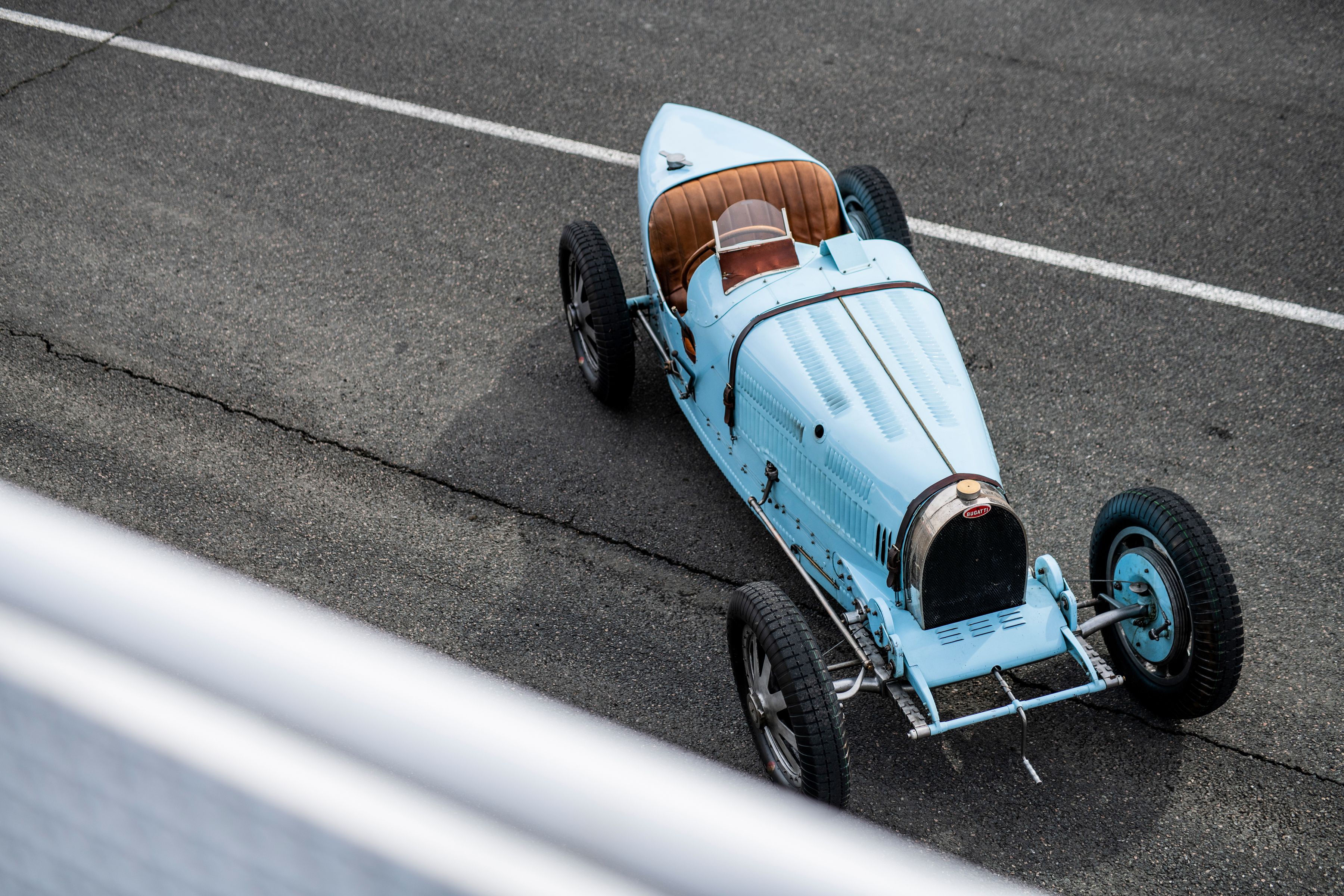Repeatable mechanically powered car with no electricity, but pure mechanical energy.
WATCH THE DEMONSTRATIONThis project explores the design and development of a car powered entirely through mechanical means. The car is engineered to store and release energy using springs, gears, and flywheels — achieving repeatable motion without any electrical components. The goal is to demonstrate efficient energy transfer, stability, and control purely through mechanical systems.
This challenge pushed the team to apply core principles of mechanical engineering, focusing heavily on friction reduction , optimal gear ratio , and chassis stabilisation under high strain, mirroring the real-world demands of high-performance automotive design.
Inspired by the iconic Bugatti Type 35, our mechanical car aims to capture the essence of artistic engineering and meticulous detail for which the original is famous. The Type 35 was a sculpture of speed, and our focus is similarly dual: we are emphasizing a clean, low-drag profile alongside aggressive, functional bodywork where no detail is purely ornamental. From the sleek bonnet to the tapering rear, the design prioritizes aerodynamic efficiency and mechanical clarity, echoing the Bugatti tradition of making even the internal components—such as the engine-turned dashboard or the exquisitely shaped exhaust manifolds—a visible work of art.







The innovative pairing of a 3D-printed gearbox with a wooden chassis represents a common and cost-effective approach found in rapid prototyping, educational robotics, and custom hobbyist projects. This design utilizes Additive Manufacturing to exploit the creative freedom of plastic printing for the complex geometry of the gears and housing, allowing for quick design iterations and the production of lightweight, intricate mechanisms. This printed assembly is then integrated with a wooden chassis, which offers excellent vibration dampening, ease of construction, and affordability.
Transfer vertical energy to horizontal energy
Interact with the key components of the mechanical drive system.
A highly detailed 3D model illustrating the complete mechanical and structural anatomy of a vehicle, focusing exclusively on the foundational systems. This includes the bare chassis and unibody framework and mounting points. The model is designed to facilitate the analysis of structural rigidity, component clearances, and the core mechanical relationships.
Due to the first design failing to run from insufficient torque, we are now reworking the car’s mechanism. While the original concept drew inspiration from the Bugatti Type 35—celebrated for its artistic engineering and sculptural performance—this new approach shifts focus from purely aesthetic precision to functional power delivery. The clean, low-drag profile and purposeful bodywork remain, but the internal mechanics are being redesigned to provide the necessary torque, ensuring the vehicle performs as impressively as it looks.







After understanding the insufficient torque of the initial design, the new functional prototype incorporates a flywheel connected to the drive axle via a multi-stage gear train made of 3D-printed plastic. This setup uses many gears working together to take the high speed of the flywheel and turn it into the torque needed to push the car. The MDF board chassis serves as a strong, stable base for mounting this complex, high-output mechanical assembly
However, the second design, using the flywheel and 3D-printed gears, ALSO FAILED because of excessive friction within the gear train. This friction consumed too much energy, preventing the flywheel from reaching the ideal RPM needed to store sufficient energy.
Consequently, the low output torque remained inadequate to move the car
Due to the first and second design failing to run from insuffi cient torque and RPM. Scarfices have to be made, all the complex mechanism have been removed and revert back to normal rubber band power car. Although the rubber band might not able to store enough energy.
This reversion represents a strategic simplification, sacrificing the original complex technical ambition to directly eliminate the debilitating frictional losses that plagued the intricate gear trains.
